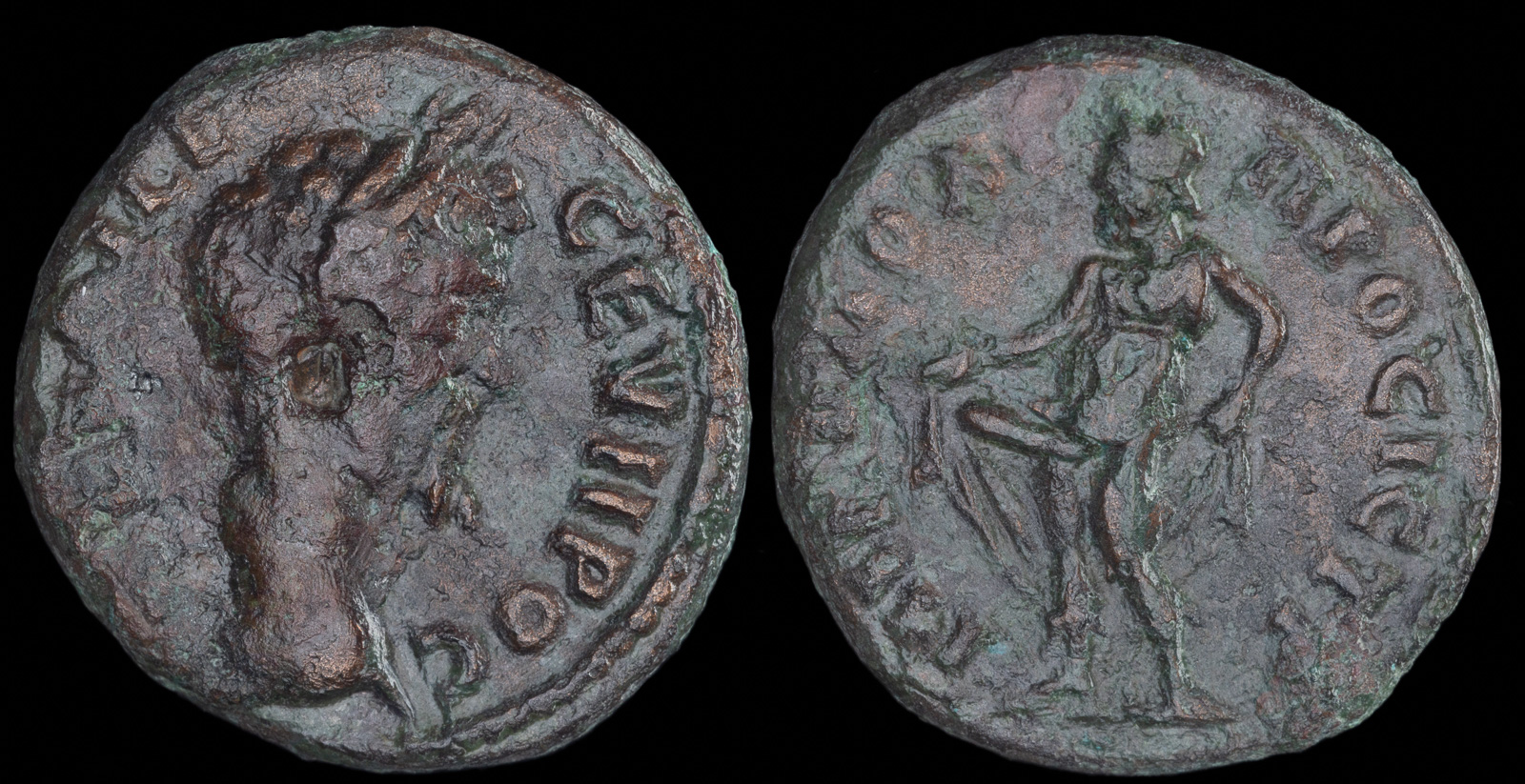Phallus
View All Tags
One of the most well-known uses of the phallus in ancient numismatics is linked to the Roman god Priapus, the deity of fertility, gardens, and abundance. Some coins from the Roman provinces depict Priapus or similar ithyphallic (erect phallus-bearing) figures, emphasizing the connection between fertility and economic prosperity. In Roman thought, a large phallus was associated with good fortune and success, and its presence on coins may have served as an apotropaic (protective) device, ensuring the well-being of those who carried them. This belief was deeply rooted in the Roman use of fascina (phallus amulets) to ward off the evil eye.
Beyond Roman coinage, the phallus also appears in Greek and earlier Italic traditions, particularly in relation to Hermes and Dionysian cults. The god Hermes, a protector of travelers and commerce, was often represented by herms—stone pillars with a carved head and an erect phallus. Some early Greek coinage incorporated this imagery, reinforcing Hermes’ role in facilitating trade and wealth. Similarly, in regions influenced by Dionysian worship, the phallus was sometimes depicted as a symbol of fertility, rebirth, and unrestrained natural forces, all of which were central themes in Dionysian festivals and rites.

Moesia Inferior, Nikopolis ad Istrum
Septimius Severus 193-211 CE
Æ 16mm, 2,96g
Laureate head right /
Priapus standing left, opening cloak, right hand pointing to his large phallus
H&J, Nikopolis 8.14.17.2; AMNG 1380 var. (rev. legend); Varbanov 2530 var. (same)